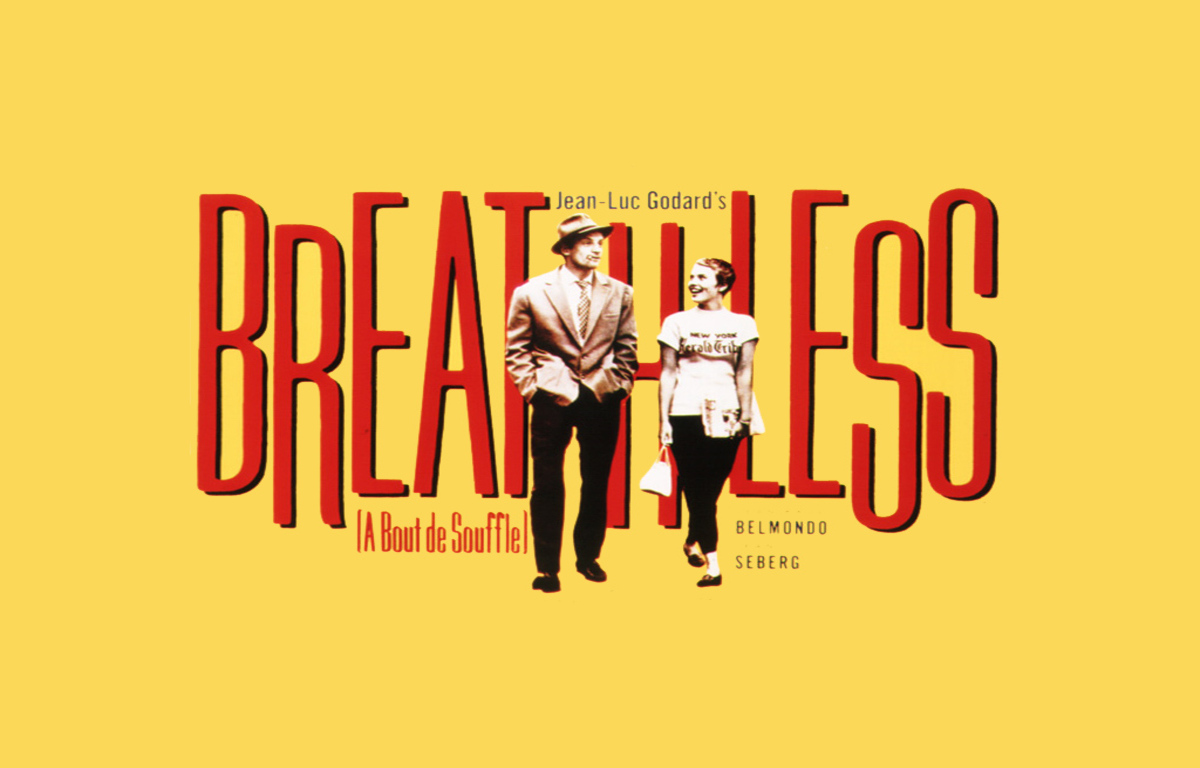
Are you a movie lover who enjoys thrilling and captivating stories? If so, then “Breathless” is a movie that should be on your watchlist. Directed by Jean-Luc Godard, this iconic French New Wave film has left an indelible mark on the world of cinema since its release in 1960.
In this article, we will delve into the world of “Breathless” and explore its captivating storyline, innovative filmmaking techniques, and its impact on the film industry. Prepare to be swept away by the dynamic performances, the unconventional narrative style, and the distinct visual aesthetic that have made this movie a timeless classic.
So, grab your popcorn and get ready to dive headfirst into these 48 fascinating facts about the movie “Breathless.” From the development process to the cultural significance, we will uncover all the intriguing details that make this film an essential part of cinematic history.
Key Takeaways:
- “Breathless” revolutionized cinema with its innovative style, captivating storyline, and influential impact on modern filmmaking, making it a must-watch for any movie enthusiast.
- From the charismatic performances to the gripping Parisian backdrop, “Breathless” immerses viewers in a timeless tale of love, rebellion, and the pursuit of authenticity, leaving a lasting impression on cinema history.
“Breathless” is a French New Wave masterpiece.
This groundbreaking film, directed by Jean-Luc Godard, was released in 1960 and has since become synonymous with the French New Wave movement.
The film’s original title in French is “À bout de souffle.”
À bout de souffle” translates to “out of breath” or “breathless” in English, perfectly capturing the film’s intense and fast-paced narrative.
“Breathless” is known for its innovative cinematography.
Godard employed a handheld camera technique known as the “jump cut,” which adds a sense of urgency and spontaneity to the film’s visual style.
The screenplay for “Breathless” was written in just two weeks.
Michel Legrand, a close friend of Godard, wrote the original screenplay for the film in record time, contributing to its raw and unfiltered essence.
Jean-Paul Belmondo stars as the charismatic anti-hero, Michel Poiccard.
Belmondo’s portrayal of a petty criminal on the run captivated audiences with his unconventional charm and rebellious attitude.
The film revolves around a love affair and a crime spree.
Michel Poiccard becomes entangled in a passionate romance with Patricia Franchini, played by Jean Seberg, as they embark on a dangerous journey together.
“Breathless” was inspired by American film noir.
Godard paid homage to classic American crime films by infusing elements of film noir into the narrative, creating a unique blend of genres.
The film challenged traditional storytelling conventions.
Breathless” disrupted traditional narrative structures, opting for a more fragmented and non-linear approach, keeping the audience engaged and intrigued throughout.
The iconic poster for “Breathless” has become a symbol of French cinema.
The black and white image of Jean-Paul Belmondo and Jean Seberg, captured in a passionate embrace, has become one of the most recognizable cinema posters in history.
The film’s soundtrack features jazz music.
Breathless” incorporates a captivating jazz score composed by Martial Solal, further enhancing the film’s free-spirited and improvisational atmosphere.
“Breathless” ignited a renewed interest in French cinema.
The film’s success not only propelled the careers of its director and cast but also sparked a global fascination with French New Wave cinema.
The film was shot on a shoestring budget.
Due to budget constraints, Godard had to be resourceful during production, utilizing available locations and relying on natural lighting for many scenes.
“Breathless” was initially met with mixed reviews.
While some critics were quick to dismiss its unconventional style, others recognized its innovative approach and hailed it as a masterpiece.
The dialogue in “Breathless” is sharp and memorable.
Godard’s screenplay is filled with witty and thought-provoking exchanges, contributing to the film’s enduring legacy.
The film explores themes of love, self-destruction, and redemption.
“Breathless” delves into the complex dynamics of relationships, as well as the consequences of impulsive actions.
“Breathless” marked Jean-Luc Godard’s directorial debut.
Prior to “Breathless,” Godard had worked as a film critic, and this film catapulted him into the ranks of influential filmmakers.
The film’s ending is open to interpretation.
Godard leaves the conclusion of the film ambiguous, allowing viewers to draw their own conclusions and engage in active interpretation of the narrative.
“Breathless” influenced a generation of filmmakers.
Its innovative style and unconventional storytelling techniques inspired countless directors, shaping the future of cinema.
The film was praised for its realistic portrayal of Paris.
“Breathless” showcases the streets of Paris in a grittier and raw manner, capturing the essence of the city in the 1960s.
The movie was shot in black and white.
The use of black and white photography adds a timeless quality to the film, blending perfectly with its artistic aesthetic.
“Breathless” was remade in 1983.
Director Jim McBride created an American remake of the film, starring Richard Gere and Valerie Kaprisky, introducing the story to a new generation of viewers.
The film’s pacing is deliberate, enhancing its sense of urgency.
Godard’s direction ensures that the film maintains a tense and suspenseful atmosphere throughout, keeping the audience on the edge of their seats.
“Breathless” showcases Parisian youth culture.
The film captures the spirit of rebellion and nonconformity among the youth in 1960s Paris, reflecting the changing social landscape of the time.
The chemistry between Jean-Paul Belmondo and Jean Seberg is palpable.
The on-screen chemistry between the two leads adds depth and authenticity to their characters’ complex relationship.
“Breathless” was filmed guerrilla-style.
Godard often relied on hidden cameras and spontaneous filming techniques, capturing authentic moments amidst the bustling streets of Paris.
The film’s narrative is driven by a sense of impending doom.
From the outset, the audience feels a sense of impending tragedy, creating a gripping and suspenseful atmosphere.
“Breathless” was banned in several countries.
Due to its provocative content and unconventional style, the film faced censorship and restrictions in some countries upon its release.
The film’s runtime is approximately 90 minutes.
“Breathless” masterfully condenses its captivating narrative into a tightly paced and concise cinematic experience.
The film continues to inspire fashion trends.
Jean Seberg’s iconic pixie haircut and effortless style in “Breathless” set the tone for fashion trends in the 1960s and beyond.
“Breathless” was Jean Seberg’s breakthrough role.
The film propelled Seberg into the international spotlight, cementing her status as an iconic actress.
The movie unfolds over the course of two days.
The fast-paced narrative takes place within a tight timeframe, intensifying the sense of urgency and desperation.
“Breathless” features numerous cinematic references.
From nods to classic Hollywood films to self-referential moments, the film is a treasure trove for cinephiles.
The film explores the blurred boundaries between fiction and reality.
Godard blurs the lines between the characters’ lives and the cinematic world, adding an extra layer of complexity to the narrative.
“Breathless” offers a commentary on the nature of fame and celebrity.
The characters’ desire for recognition and notoriety serves as a reflection on society’s obsession with fame.
The film’s use of jump cuts was initially considered unconventional.
Godard’s innovative editing techniques, including the use of jump cuts, challenged traditional filmmaking norms and conventions.
“Breathless” features an iconic car chase scene.
The thrilling car chase through the streets of Paris remains one of the most memorable and influential sequences in cinematic history.
The film showcases the French New Wave’s rejection of traditional studio filmmaking.
Breathless” exemplifies the movement’s commitment to independent filmmaking and artistic freedom.
Fashion plays a significant role in “Breathless.”
The characters’ sartorial choices reflect their personalities and the style of the era, contributing to the overall aesthetic of the film.
The movie’s narrative unfolds in a non-linear fashion.
Godard disrupts the chronological order of events, forcing the audience to piece together the story in their own minds.
“Breathless” introduced a new form of on-screen storytelling.
Godard’s experimental approach revolutionized cinema, paving the way for future filmmakers to push artistic boundaries.
The film’s title perfectly encapsulates its themes and tone.
“Breathless” symbolizes the characters’ restless and desperate search for meaning, as well as the fleeting nature of their existence.
The movie’s style is influenced by the French philosophy of existentialism.
Existential themes such as alienation, freedom, and the search for authenticity are woven throughout the film’s narrative.
“Breathless” is considered a cornerstone of modern cinema.
The film’s impact and enduring relevance solidify its position as a seminal work in the history of cinema.
“Breathless” was added to the National Film Registry.
In 1990, the United States Library of Congress recognized the cultural significance of “Breathless” by including it in the National Film Registry.
The film showcases Godard’s distinctive directorial style.
Godard’s auteur sensibility and unique vision permeate every frame of “Breathless,” creating an immersive cinematic experience.
The shooting of “Breathless” took place on location in Paris.
The authentic Parisian backdrop adds to the film’s realism and serves as a love letter to the city.
“Breathless” inspired numerous homages and references in popular culture.
From music videos to other films, Godard’s masterpiece continues to influence and resonate with contemporary artists.
“Breathless” remains an essential viewing for any cinephile.
Its impact on the cinematic landscape and its enduring legacy solidify its place among the greatest films of all time. Prepare to be captivated by the mesmerizing journey of “Breathless.”
There you have it—the 48 fascinating facts about the movie Breathless. From its innovative cinematography to its enduring influence on modern cinema, this film continues to captivate audiences around the world. So sit back, relax, and enjoy the timeless magic of “Breathless.”
Conclusion
Overall, Breathless is a groundbreaking film that established Jean-Luc Godard as one of the most influential directors in cinema history. With its innovative techniques, iconic performances, and underlying themes of rebellion and existentialism, Breathless remains a timeless masterpiece that continues to captivate audiences around the world. Whether you’re a fan of French New Wave cinema or simply looking to expand your cinematic horizons, Breathless is a must-watch film that will leave a lasting impression.
FAQs
Q: Who directed Breathless?
A: Breathless was directed by Jean-Luc Godard.
Q: When was Breathless released?
A: Breathless was released in 1960.
Q: What is the plot of Breathless?
A: The film follows Michel, a young criminal on the run, as he navigates through love, death, and the pursuit of freedom.
Q: What is the significance of Breathless in cinema history?
A: Breathless is considered one of the key films that ushered in the French New Wave movement, characterized by its unconventional storytelling techniques and rejection of traditional filmmaking norms.
Q: Who are the main actors in Breathless?
A: Jean-Paul Belmondo and Jean Seberg are the lead actors in Breathless, delivering memorable performances.
Q: Is Breathless available to watch online?
A: Yes, Breathless is available for streaming on various platforms, making it easily accessible for movie enthusiasts.
Q: How long is the running time of Breathless?
A: Breathless has a running time of approximately 90 minutes.
Q: Does Breathless have English subtitles?
A: Yes, Breathless is typically available with English subtitles for non-French speaking viewers.
Q: Has Breathless won any awards?
A: Yes, Breathless received numerous accolades, including the Silver Bear for Best Director at the Berlin International Film Festival.
Q: Can you recommend other films similar to Breathless?
A: If you enjoyed Breathless, you may also like other French New Wave films such as The 400 Blows, Jules and Jim, and Contempt.
If you're captivated by the groundbreaking style and impact of "Breathless," why not explore more cinematic gems? Dive into the whimsical world of French New Wave with "A Woman Is a Woman," immerse yourself in the shadowy depths of film noir at a festival celebrating the genre, or uncover the brilliance of Jean-Luc Godard's directorial prowess in "My Life to Live." Each film offers a unique perspective on the art of storytelling, inviting you to embark on a thrilling journey through the annals of cinema history.
Was this page helpful?
Our commitment to delivering trustworthy and engaging content is at the heart of what we do. Each fact on our site is contributed by real users like you, bringing a wealth of diverse insights and information. To ensure the highest standards of accuracy and reliability, our dedicated editors meticulously review each submission. This process guarantees that the facts we share are not only fascinating but also credible. Trust in our commitment to quality and authenticity as you explore and learn with us.


